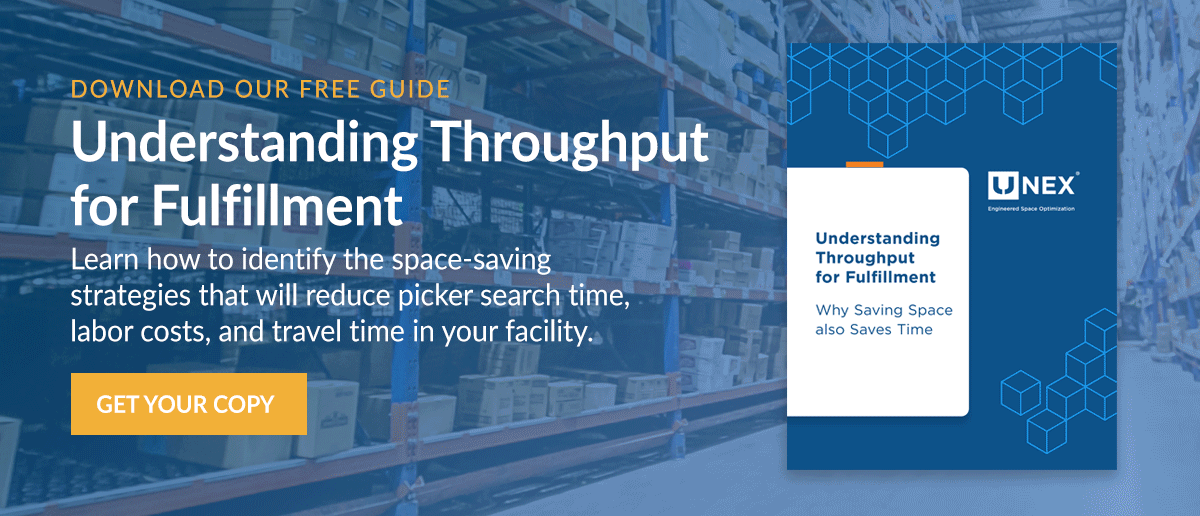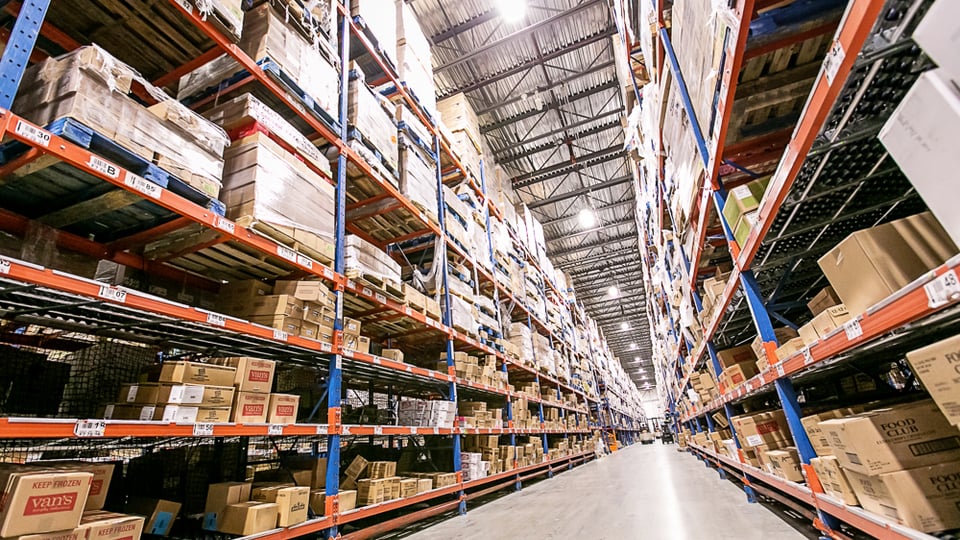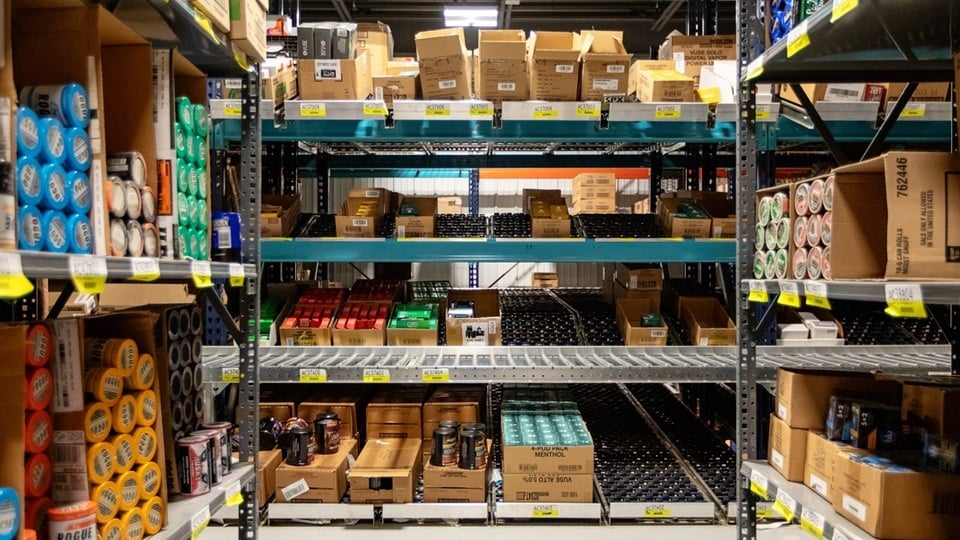Peak Season Preparation for Omnichannel Fulfillment
The COVID-19 pandemic has reshaped omnichannel fulfillment and helped cause a 32% increase in eCommerce sales from 2019 to 20201. With the Delta variant currently causing an increase in case totals across the country, it appears that this holiday season may be as busy as the last for all buildings fulfilling online orders.
Preparation is key to successful, efficient, and safe operations for all fulfillment centers this holiday season. In this article, we’ll take a look at the biggest challenges facing omnichannel fulfillment, how to be prepared for them, and the solutions that will make this peak season a smooth one.
Challenges Retailers Face with Omnichannel Fulfillment During Peak Season
Preparing for and Managing an Influx of Orders
A warehouse or retail backroom could run efficiently for picking and fulfilling orders from January to October but find itself completely unprepared when the holiday season begins and orders increase significantly.
An increase in order volume often results in:
- Unprepared facilities and staff
- New facilities not being ready and new temporary staff not being onboarded in time
- Existing processes not being set in stone before peak season, leading to downtime and a myriad of issues trying to keep up with orders coming in from multiple channels
Running out of Warehouse or Order Fulfillment Space
Peak order volumes mean peak stock, which inevitably leads to more space constraints in your warehouse or fulfillment center. For many operations, it is not practical to expand or purchase a new space to store the influx of SKUs required to meet increasing demands, which are particularly elevated during the holidays.
Labor Shortages and Increased Labor Costs
Before COVID-19, finding the right labor solutions for an industry where speed and accuracy are important was hard enough. Deep into the second year of the pandemic, the labor market has been turned on its head for a variety of reasons.
In fulfillment, labor costs account for 60-80% of an operation‘s expense, more specifically, the cost centers around the order fulfillment labor.
Some of the biggest labor-related challenges for fulfillment include:
- Increasing labor costs
- Finding reliable workers
- Onboarding large numbers of seasonal and temporary employees needed to help with peak season operations
Solutions for Managing Increases in Orders, Space Constraints, and Resources for Peak Season
Preparing for and Managing an Influx of Orders
It may seem obvious, but being proactive well before October and November will give fulfillment operations the ability to manage the rush.
One of the most important things fulfillment center managers can do to be prepared is ensuring SKUs are stored according to their throughput. Ad-hoc picking in a warehouse may get the job done during non-peak seasons, but it will be inefficient for order fulfillment during peak operating times. Similarly, retail backrooms with limited SKUs and adherence to just-in-time inventory strategies may have been a good pre-pandemic solution, but it won’t work with eCommerce set to dominate in 2021.
A slotting system based on throughput allows an operation to have every SKU in an optimal position, thereby reducing pick time. For example, shaving just 10 seconds off the time it takes a team member to locate and pick medium-throughput SKUs can increase capacity by 100 picks per day.
If your organization has an existing or long-standing slotting system, now is an excellent time to see if there is any re-slotting that needs to be done in your warehouse.
Doing this as soon as possible will help you identify any gaps in your current process so you are positioned for success come peak season. In other words, you don’t want to get to October and find out you have a problem where you should have analyzed your inventory/re-slotted two months earlier. The height of peak season is not a time to make changes. The time is now.
UNEX can help walk you through the process of organizing your SKUs based on throughput and selecting the correct storage mediums to match. Check out our Guide to Understanding Throughput for Fulfillment for complete details.
Solutions for Increasing Space Utilization in Your Warehouse or Order Fulfillment Operations
As mentioned previously, it is not always feasible to expand your existing footprint, build a new location, or find additional space to lease. Typically, 20% of current warehouse or order fulfillment space is being used optimally, so there is much more room that can be utilized to store goods.
Sometimes it is feasible to reduce the square footage of the space by consolidating shelving that is not being used or getting rid of slow-moving and obsolete items. Reducing square footage reduces costs, decreases the strain on labor resources, and improves efficiencies.
When space is utilized properly, you’re eliminating waste in more ways than one. For example, if your storage racks are positioned to hold a 4-by-4-foot box, but the largest container is only 3-by-3, there is empty space that could be utilized by repositioning the rack. More items could be stored in the same amount of space. Once you determine this, you can work toward ensuring every SKU is stored in its optimal storage medium.
This basic space optimization principle can apply to large fulfillment centers and in-store backrooms, or customer pick-up areas as well - all of which should be examined prior to the peak season rush.
Labor Shortages and Increased Labor Costs
The most productive step for combating rising labor costs is saving space. When you save space, there is a significant ripple effect that trickles down into other areas of the fulfillment process to create efficiency.
For example, when you fit more SKUs into less space, you can reduce pick paths within the warehouse. Reducing travel time for workers puts more time back into the order picking process, providing the operation with added hours to fulfill more orders during every shift.
Saving time saves money and helps offset the rising costs of labor. In turn, this can help improve the issues warehouse, fulfillment center, and store managers face with finding and keeping workers for the season. Even operations that were thought of as short-staffed can run more efficiently once space and time are saved.
UNEX Fulfillment Solutions Can Help During Peak Season and Beyond
UNEX solutions will help you ensure that this holiday season will be a productive and happy one for managers, workers, and customers alike. These solutions optimize space, leading to efficient operations that save time and money, and not just during peak season. Implementing space-saving solutions that are tailor-made for your operation will provide a long-lasting return on investment for years to come.
SpeedCell — Dynamic Industrial Shelving
SpeedCell is UNEX’s dynamic, high-density storage system - a great alternative to static industrial shelving. SpeedCell is a dynamic storage solution that consists of columns that are suspended from a steel track system that integrates seamlessly into any type of pallet rack beams. This makes it very easy and cost-effective to increase SKU density very quickly without having to purchase completely new equipment or expand outside of your existing footprint.
SpeedCell is ideal for a variety of SKUs, but it is especially impactful for storing low-throughput SKUs. SpeedCell can increase storage density by up to 60% when compared to static shelving or picking from pallet positions. Because of the time saved on travel and order picking, SpeedCell can decrease labor costs by up to 40%.
SpeedCartt — Order Fulfillment Carts
Like SpeedCell, SpeedCartt is a high-density solution that increases pick efficiency and saves time on travel. It allows for greater SKU availability compared to boxes and bins on basic utility or shopping carts, and is ideal for high-traffic areas and seasonal demands.
SpeedCartt is a mobile solution that can work in several settings. For example, it can be used for order picking and staging in warehouses and retail locations, or for staging buy-online-pickup-in-store (BOPIS) orders in customer pick-up areas.
SpanTrack — Carton Flow Tracks
SpanTrack is a customizable carton flow solution that can be added to any new or existing pallet rack. No shelves or intermediate support is required. SpanTrack is offered in two main varieties; SpanTrack Lane and SpanTrack Wheel Bed. SpanTrack Lane offers dedicated roller lanes that provide the most surface contact to optimize carton flow. SpanTrack Wheel Bed provides increased flexibility by offering universal wheel beds that maximize space and throughput for inventories of varying shapes and sizes.
With a variety of flow options, end styles, and accessories, SpanTrack offers a robust set of solutions that can be tailored to meet the unique needs of any operation.
Pallet Track — Pallet Flow Systems
Pallet Track is a pallet flow solution that is ideal for your fastest-moving SKUs. Pallet Track optimizes space by using rollers or wheel rails to create a dynamic system that is far more efficient than picking from static pallet positions. Pallet Track creates the ideal first-in, first-out (FIFO) storage system and keeps products at the point of pick.
Preparing for Peak Now Ensures a Prosperous the New Year
Preparing for peak season is a top priority for omnichannel fulfillment, but the challenges addressed and solutions offered here will carry your operation well beyond the holiday rush. As the past year and a half has shown, outside events and circumstances can have a huge impact on order fulfillment, warehousing, and retail operations. Being prepared with these durable and reliable solutions now means you’ll set yourself up for success in 2022 and beyond.
If you’re looking for guidance on preparing for the upcoming peak season, contact our space optimization specialists. When you work with UNEX, you’ll enjoy free engineering support on all of your projects. Contact us today for complete details.
References:
1: https://www.cnbc.com/2021/01/12/holiday-2020-spending-online-surges-32percent-to-188point2-billion-adobe.html






